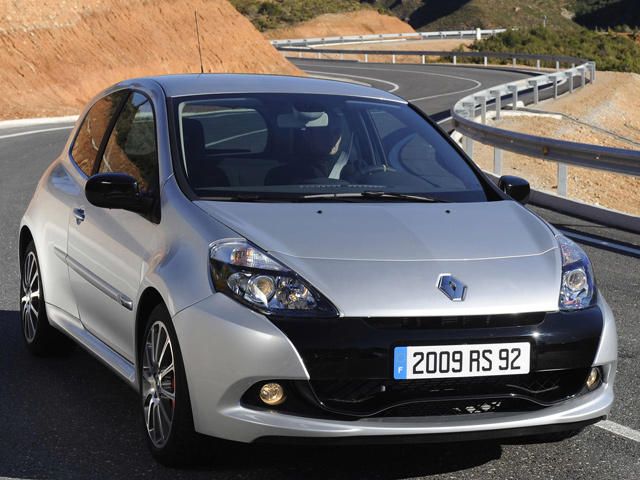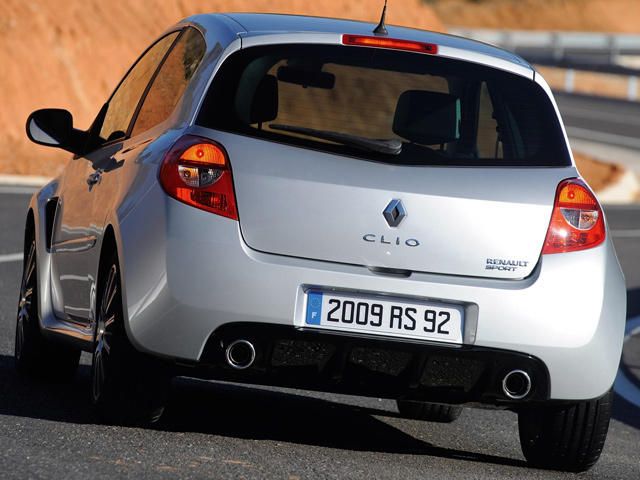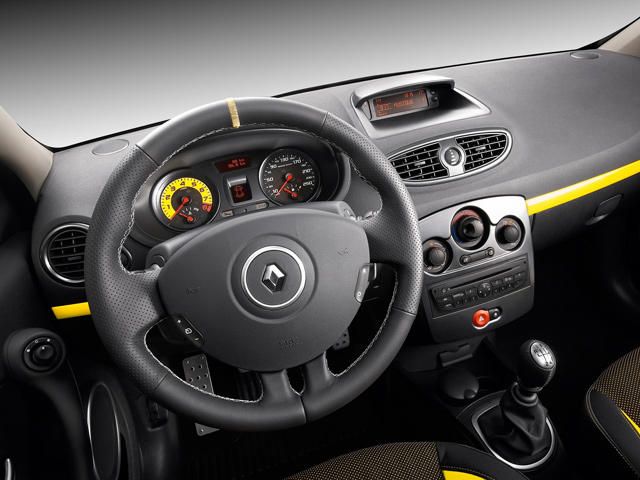When it comes to hot hatches, Renault gets the prize for the most absolutely insane production vehicles. And these are not even insane in the way that so many other French cars have been, which is just generally weird. No, Renault's hot hatches have been that awesome kind of insane that forever endears them to gearheads: insanely fast from point A to point B, at the expense of absolutely everything else. They have also made some normal ones, but Renault has never been afraid to push its hatches further.
Renault was one of the first companies to ever build a hot hatch. Its Renault 5 Alpine hit showrooms in 1976, a few months before the VW Golf GTI went on sale. This 1,730lb lightweight hatchback produced 92 horsepower, which was twice as much as the standard Renault 5 and enough to get the car to 60 mph in 9.7 seconds. The Renault 5 Alpine Turbo would follow in 1982, cutting a full second off of the 0-60 time. But things would start getting weird a bit before that. 1980 saw the introduction of the Renault 5 Turbo (not to be confused with the Renault 5 Alpine Turbo, despite Renault's best efforts to confuse us all).
This was really a homologation rally car, and it was inspired by the already-retired Lancia Stratos. Renault took the front-engine chassis of the 5 and moved the engine to behind the front seats, figuring that if the Stratos was mid-engine, its car should be too. It produced 158 horsepower and could get to 60 in 6.6 seconds. Renault's most common current hot hatch is based on the Clio supermini, and has been in production since the 1999 model year. It is most commonly known as the Clio RS, which stands for Renault Sport, but the name is sometimes shortened to "Sport" instead of RS.
This is basically a Clio with an engine from a bigger Renault, a simple but effective formula. Although, for a brief time in the early 2000s, Renault offered another insane hot hatch: the Clio V6 Renault Sport. It had a 3.0-liter V6 engine, and since this obviously wouldn't fit under the hood, Renault elected to once again make a mid-engine hot hatch. Putting out 255 horsepower, the V6 was the most powerful series production hot hatch ever made, right up until the 2009 debut of the VW Golf R. It had no back seats, the turning radius was something of a joke and fuel economy was the kind of terrible which seems almost impossible in a car this small.
But so what? It was a hell of a fun car, and had the same kind of charming lunacy that made the 5 Turbo so lovable. Since the Clio V6 was retired, the Clio no longer occupies the top slot in Renault's hot hatch lineup. This honor belongs to the Megane RS, a slightly bigger and more powerful turbocharged model. The Megane is also the car with the closer ties to motorsports. The racing version is equipped with the engine out of a Nissan 350Z and competes in a number of different touring car events. But there is one big advantage for the Clio RS: it's cheaper. Quite a bit cheaper, actually - it's about 25% less than the Megane RS, and packs just 22 fewer horses.
It does 0-60 less than a second slower than the Megane RS as well, and is actually faster to 60 than the Alfa Romeo Giulietta Cloverleaf, and is obviously much cheaper than that as well. Even though Volkswagen might make the most iconic of all hot hatches, Renault is probably the company which understands them the best. While hot hatches from other companies have gotten progressively bigger, heavier and more expensive, Renault has remembered to still offer a small and cheap hot hatch which relies more on its power-to-weight ratio than on outright power.
Renault remembers to occasionally make something outrageous as a way to keep people paying attention, but it also makes a car that is very true to the genre's roots. It is thanks in a large part to Renault that hot hatches are as popular with young people as they are. Younger buyers need cheaper cars, but they appreciate a measure of insanity, and Renault has both sides of that euqation covered.



